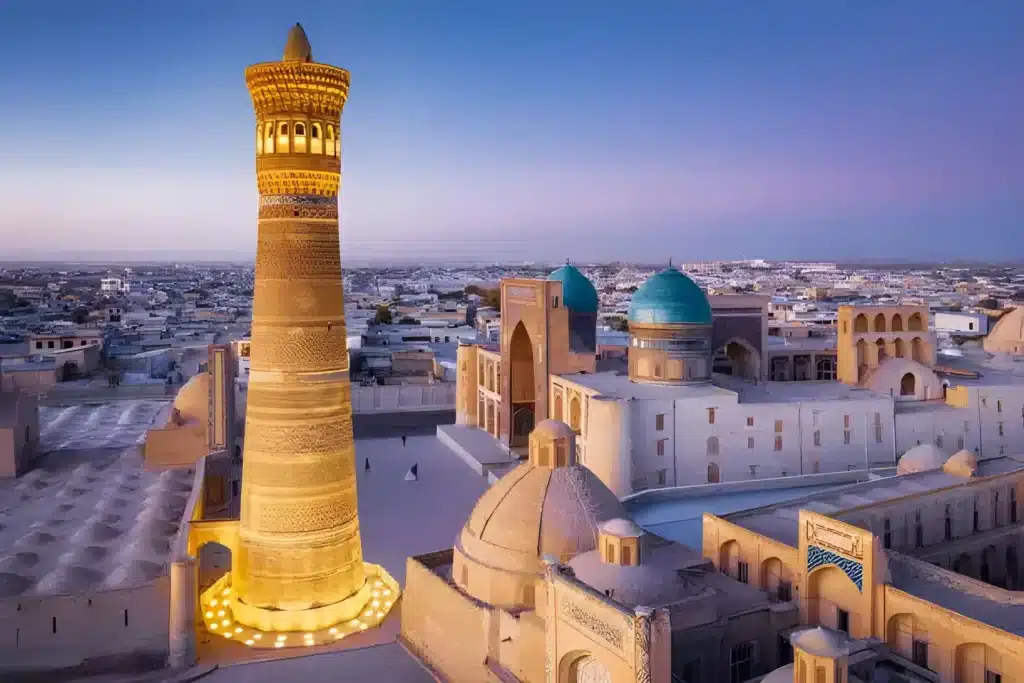
Discover theUzbekistana land where the stories of Silk Road caravans mingle with architectural splendours and age-old traditions. This exceptional tour of 8 days invites you to explore mythical cities such as Khiva, Bukhara, Samarkand and Tashkenteach telling the story of a different rich past which continues to vibrate through its alleysits monuments and its lively markets.
Khiva transport you back to a bygone era, with its ramparts of ochre earth and its chiselled buildings which stand proudly beneath the azure sky. À Bukhara, oasis in the heart of the deserteach monument bears witness to the the grandeur of Islamic architecture and cultural importance of this ancient caravan stage. Samarkandis a daydream its dazzling blue domes and its sparkling mosaics reflect the glory of Tamerlan. Finally, Tashkent, modern and historic capitalis an elegant blend ofancient heritage and the contemporary dynamics.
Between majestic visitsimmersion in the colourful bazaars and moments of serenity in the face of awe-inspiring landscapesthis trip is a an invitation to step back in time and immerse yourself in a world that's as diverse mysterious thatbewitching.
4 disponible(s)
875€ Original price was: 875€.568€Current price is: 568€.
Immerse yourself in the heart of Uzbekistan, where history and tradition blend harmoniously with fascinating landscapes. This exclusive 8-day, 7-night tour invites you to explore the priceless treasures of the Silk Road: from the timeless elegance of Samarkand to the cultural richness of Bukhara, via the architectural wonders of Khiva and the vibrant energy of Tashkent. With a group limited to six participants, discover legendary cities, monuments of unrivalled beauty and living traditions, while enjoying optimum comfort and French-speaking accompaniment. Let yourself be transported on a journey where each stage tells a story.
D1: Paris - Istanbul - Ourgentch Turkish Airways
Participants meet at Paris CDG airport. Assistance with check-in formalities. Boarding and flight to Tashkent.
KHIVA
D2: Urgentch-Khiva
Breakfast. In the morning around 06:10 arrival at Urgentch airport and transfer to Khiva. Day devoted to visiting KHIVA. Almost in the centre of Itchan-kala, a long blind wall flanked by a minaret is actually the façade of the Juma (Friday) Mosque, Khiva's main mosque. The old fortress of Kounya Ark ("The Old Fortress", 17th century) and then the Mukhammad Rakhimkhon Feruz medersa - the largest in Khiva, the mausoleum of Sayid Alaouddine.
Afternoon discovery of the city considered to be the masterpiece of Uzbek art: the Djouma mosque is home to Khiva's most famous monument: the mausoleum of Pakhlavan-Makhmoud and the Islam Khodja medersa and minaret. The highest minaret in Khiva (44.50 m) was built in 1910 by the vizier of Isfandiar Khan, Islam Khodja. Tashkhauli Khan's palace and Khiva's covered bazaar.
Dinner and folk concert in the courtyard of the Medresa in Khiva. Overnight accommodation.
D3: Khiva / Bukhara (450 km by plane 15:20 - 16:10 by Uzbekistan Airways 56)
After breakfast, check-out and visit to the city of Khiva. Discover the woodcarving and silk carpet-making workshops, and see how "NAN", the Uzbek bread, is traditionally prepared!
Transfer at around 13:30 to Urgench airport to catch flight HY 056 to Bukhara at 15:20. You will fly over the Kyzyl-Koum desert, the largest desert plain in Central Asia, covering an area of 300,000 square kilometres and rich in natural resources. You will arrive in Bukhara at the end of the day, where you will be transferred to your hotel. Dinner in the restaurant. Night at the hotel.
BOUKHARA
Day 4: Bukhara
We have breakfast. Visit to the "Museum City", which had no fewer than 360 mosques before the Revolution. A veritable oasis in the middle of the red Kyzyl Kum desert, the city has managed to retain its oriental spirit. Once called "The Pearl of Islam", BOUKHARA is one of the most endearing stops on your trip. BOUKHARA is a compendium of all the architecture of Central Asia.
Visit to the Nodir Devonbegui Medersa (1622-1623), originally designed as a caravanserai. The medersa is part of one of Bukhara's most original architectural ensembles: the Liabi-Khauz ("Basin Bank"). The Tchar Minar medersa with its four minarets and turquoise domes. The two-storey Maghoki Attari Mosque (XII-XVI) was built on the remains of the foundations of the old medieval building - its façade is sunk into the ground by almost 4.5 metres - hence its name Maghok - underground.
The Gaokushon complex: the Medersa and the Khodja Mosque with its minaret represent styles of architecture unique to Bukhara: the medersa and the mosque are built side by side and their main façades face a small square with a pond.
Another of Bukhara's 'classic' styles is the 'koch' (twins) - two medersas facing each other. These include the Ulugbek Medersa, built in 1417, and the Medersa of Khan Abdelaziz.
Continuation of the city tour: Kalian Complex, or the "Foot of the Great". Admire the Palace of Forty Columns and Job's Well.
Discover the Ark citadel, which was the fortified residence of the Emir and his harem until 1920. It included palaces, barracks, the mint and the prison. Located on Reghistan Square, it was here that corporal punishment took place, including the famous trial of 72 strokes of the cane.
Opposite, visit the Bolo-Khaouz mosque, whose trees surrounding the pool and minaret provide a welcome haven of shade. Marble steps lead down to the dark but refreshing waters of the pool, built in the 16th century and which gave its name to the mosque (khaouz).
Dinner and folk concert in the courtyard of the Medresa Nodir Divan Begui. Night at the hotel
CHAKHR-I-SABZ
D5: Bukhara / Chakhr-i-sabz / Samarkand 380km
Breakfast.
Departure for CHAKHR-I-SABZ, Tamerlane's birthplace. In Chakhr-I-Sabz, "the green city", you will visit the magnificent White Palace, the Ak-Sarai, the most beautiful secular building in Asia, which will surprise you by its size. The predominant colours in the immense mosaics are blue, green and gold. Craftsmen from Khorezm and Azerbaijan were still at work in 1404 when the Spanish ambassador Clavijo was fascinated to pass through an archway 40 metres long and 22 metres wide.
Visit the great Friday Mosque of Kok Goumbaz, built by Ulugh Beg, and the religious complex of Dor Ut Tiliavat.
Then on to SAMARCANDE, one of the oldest cities in the world. A former stopover on the Silk Road and a flagship city of the East when Tamerlane was its master, its name is still shrouded in mystery and dreams. It is no longer "the face of the earth", nor even "the precious pearl of the Islamic world", and yet the sight of its monuments, its medersas, its minarets, its mosques (now restored) seems to reveal both the monuments of a prestigious civilisation and the expression of an art that has reached its peak.
The face of the old city of Samarkand today is that given to it in the 14th century by the emperor Tamerlane, who made it the prestigious capital of an immense empire stretching as far as the Black Sea and the Punjab in India, bringing together the most famous scholars of his time: poets, architects, painters, astronomers...
Arrival and check-in at the hotel.
Dinner in the restaurant. Night at the hotel.
SAMARCANDE
D6 : Samarkand / Tashkent (fast train Afrosiyab 17:00-19:20 )
Breakfast.
Depart for a tour of the city, where you can discover the splendours of the Reghistan complex. This complex of majestic, slightly leaning medersas, whose magnificently proportioned spaces are covered, almost to the point of excess, in earthenware and blue mosaics, is the city's centrepiece and undoubtedly the most impressive architectural site in Central Asia.
It comprises the Ulugbek medersa, the Shir-Dor medersa and the Tilla-Kari medersa.
Continuation of the city tour with the most famous monument in SAMARCANDE, which is also the symbol of the city: the Gour-Emir, a deformation of "Gouri-Mir" or "tomb of the Emir". As in other Muslim mausoleums, the slabs simply mark the location of the graves, which are located in an underground crypt. It is in this mausoleum that Timur, Ulug Beg and other members of his family are laid to rest. The interior of this mausoleum is sumptuous. Then there are the Roukhabad and Ak-Saraï mausoleums.
Visit to the Bibi Khanoum mosque, which must have been the largest in Central Asia. Time has only spared the portal, two small side buildings and the large central mosque.
Stroll through the city's colourful Siyab bazaar.
Discover the Chakhi-Zinda necropolis. On the edge of Afrassiab, in the heart of a vast cemetery, lies the unique complex of Chakhi-Zinda (or Chah-i-Zindeh) mausoleums. This name refers to Koussam, son of Abbas and cousin of Mohammed, whose martyrdom here is thought to be the origin of these cult monuments.
Visit the remains of the Ulughbek observatory (15th c.). The observatory was designed for observing the sun, stars and sky. Ulughbek calculated the length of the celestial year.
Visit to the Afrosiab Museum, one of Samarkand's greatest archaeological monuments. The archaeological finds uncovered during the site's excavations are on display in the Samarkand History Museum located in the eastern part of the site.
Visit to St Daniel's Mausoleum. Set on the edge of the Afrosyab cliff overlooking the River Syab, the long mausoleum has five domes. It is the only place in Samarkand where all three faiths - Muslim, Christian and Jewish - are represented. It was built in the early 14th century by Tamerlane, who brought back the saint's bones from his campaign in Asia Minor.
Departure for Tashkent on the Afrosiyab express train. Dinner in the restaurant.
D7: Tashkent
Breakfast.
The day is devoted to exploring Tashkent. This city is rich in parks and fountains. 2000 years old, it was once a major commercial centre at the crossroads of the caravan routes linking Europe and India; today it remains a major cultural centre.
Departure for a tour of the capital, which was once one of the oldest cities in Central Asia. Visit to the Khasti Imam complex in the old town of Tashkent, including the KafalShashi mausoleum and the BarakKhan madrasa, dating from the 16th century and housing the famous Koran of the Khalifa Othman (7th century). Visit to the Koukaldach madrasa. Visit to Independence Square and Amir Temour Square. Discover the Chorsu Bazaar*, the largest bazaar in the centre of Tashkent.
Continuation of the city tour to Independence Square, Theatre Square and Amir Temur Square. Discover Tashkent's most beautiful metro* stations, reminiscent of those in Moscow! Then a visit to the Museum of Applied Arts.
Transfer and overnight at the hotel. Farewell dinner at the restaurant including vodka and wine and overnight at the hotel.
TASHKENT
D-12: Tashkent - PARIS
Depending on flight times, breakfast will be taken either at the hotel or on the plane. Depending on flight times, transfer to TASHKENT airport. Assistance with check-in formalities. Boarding and return flight. Service on board. Arrival at your airport
End of our services.
This programme is subject to change due to imperatives such as flight rotations, weather conditions or any other case of force majeure. Photos given for information only, non-contractual.
Accommodation: 3* or similar
Khiva GRAND VISIR Khiva 3*** Hotel
Bukhara Hotel MEGROB BOUTIQUE Boukhara 3***
Samarkand Hotel SAMARIA 3***
Tashkent Hotel EUROPE 3***
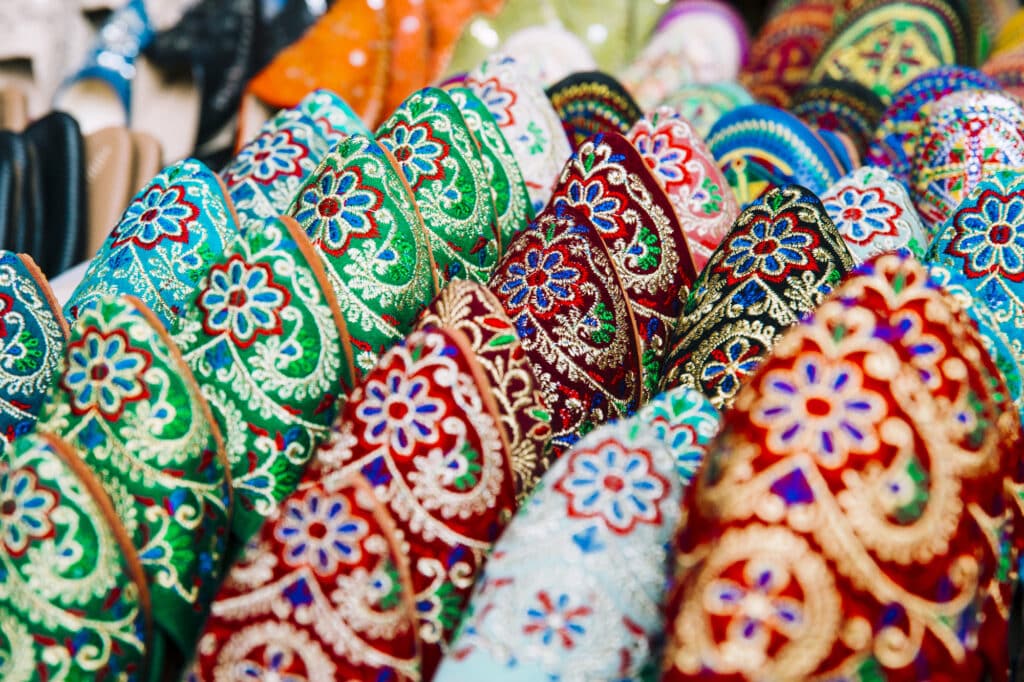
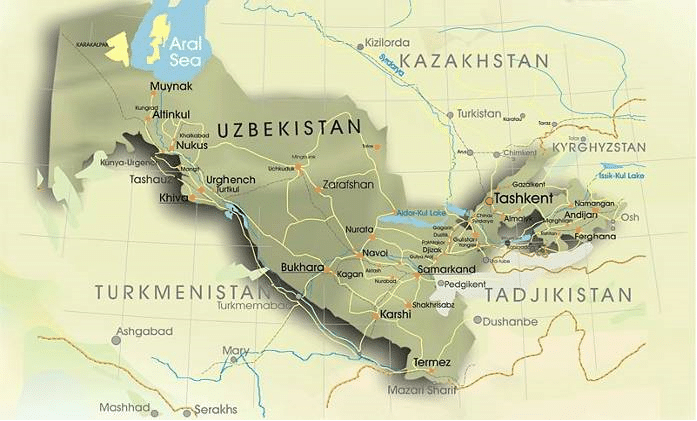
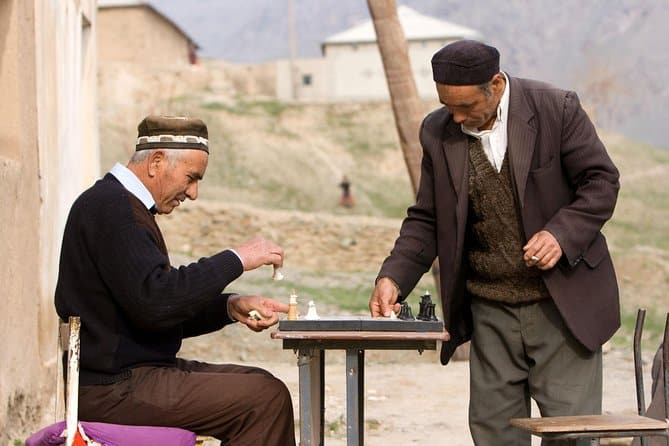
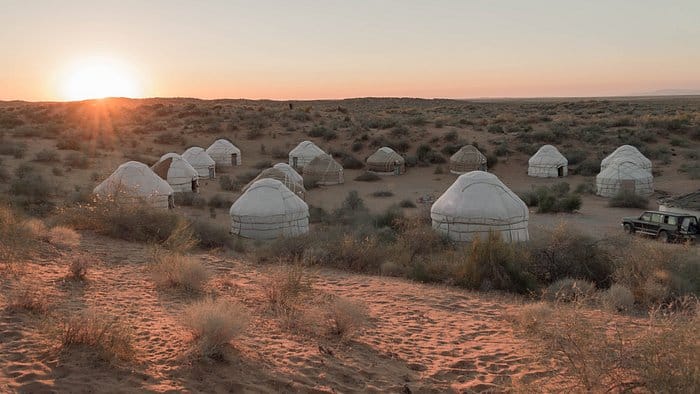

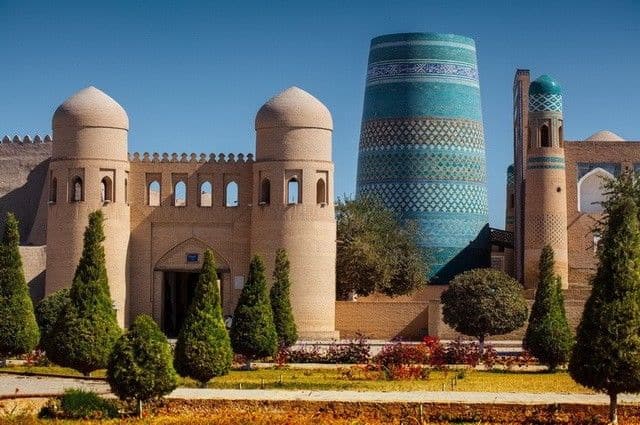
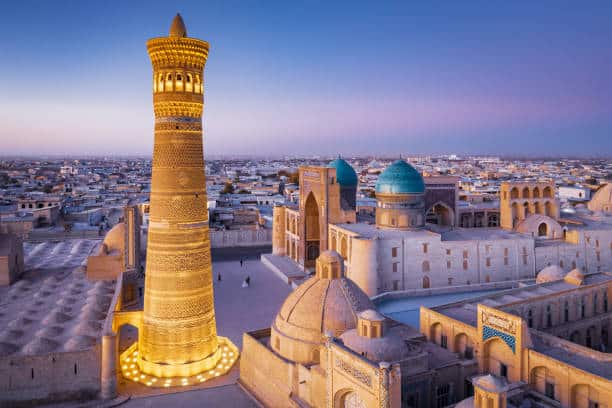
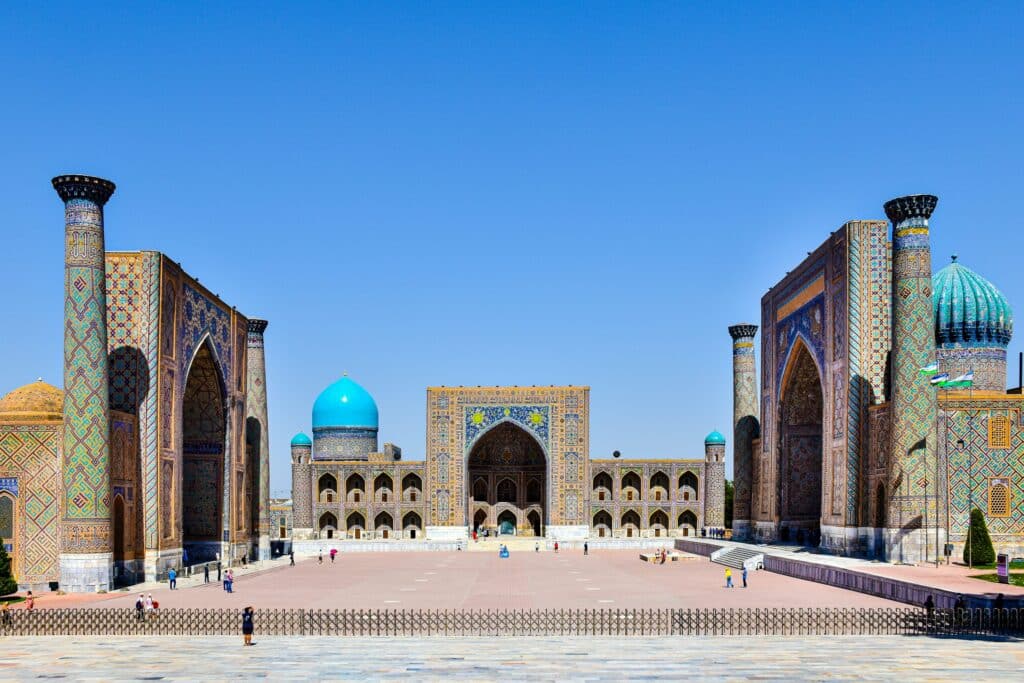
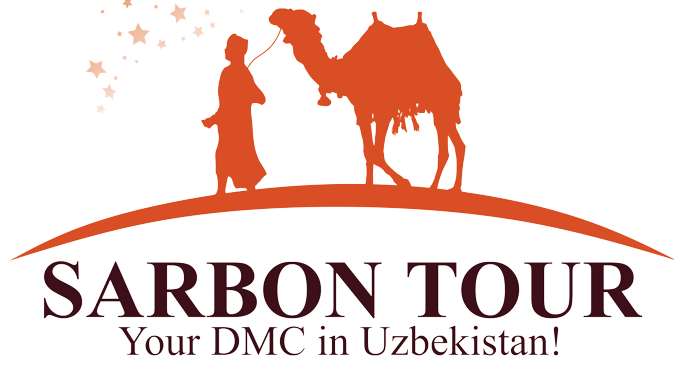
Sarbon Tours
1/12, K. Ashurov street, Samarkand 140105, Uzbekistan
+998 90 276 07 95
Immerse yourself in Uzbek village life: songs, golden fields, craft workshops and shared laughter - an authentic and vibrant Uzbekistan.
Read moreDiscover the enchanting flavours of Uzbekistan with Sarbon Tour: an unforgettable culinary adventure awaits you!
Read moreCross Central Asia with Sarbon Tours: mythical cities, dizzying peaks, nomadic steppes and unforgettable encounters.
Read moreUzbekistan is often imagined as a still fresco, frozen in the splendour of the domes of Samarkand, the alleyways of Bukhara and the golden palaces of Khiva.
Read moreSarbon Tours, experts in Uzbekistan, offers tailor-made tours of Central Asia. Discover history, nature and culture with passionate guides.
Read moreEmail: is an innovative platform that combines communication and resale of products. Take advantage of discounted hotel nights or other services, and unique marketing communication.
Thanks to our Incomparable model, we allow professionals to benefit from increased visibility while enabling travelers to access exceptional offers.
© 2024 Breeziful. All rights reserved.
Geneva Business Directory: VAT number CHE-423.992.781
Find Breeziful Travel in
Tourism directory - Travel agency